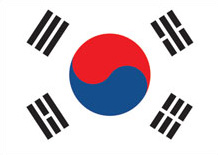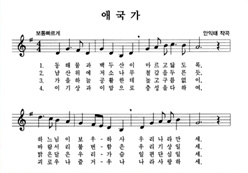About Korea
Following its miraculous development over the last 50 years,
Korea is now a modernized vibrant nation that still maintains its traditional culture.
The Republic of Korea is a small country on the far eastern edge of Asia. Although it ranks 109th in the world in terms of land area, the country is a center of economic activity, culture, and arts. Korea was colonized by Japan in the early 20th century and later had to endure the Korean War (1950-53), but it has achieved amazing economic growth in a short period, dubbed "the Miracle on the Han River."
Today, Korea is an industrial nation standing tall on the world stage. Its semiconductor, automobile, shipbuilding, steel making, and IT industries are on the leading edge in global markets. It hosted the 1988 Seoul Olympics and the 2002 FIFA World Cup Korea/Japan. More recently, Korean dramas, movies, and music are attracting many audiences in Asian countries and beyond, creating what is being called the "Korean Wave." Korea's new standing in the international community was highlighted in 2010 with the nation becoming the first Asian country to chair the G20 and host the G20 Seoul Summit.
General
Republic of Korea (South Korea)
Seoul (10.2 million) (2012)
Taegeukgi
Mugunghwa (Rose of Sharon)
won (US$1 = 1,127 won) (2012)
Korean (Writing system: Hangeul)
People
50.95 million (South Korea) (2012)
* Foreign Residents (including short-term sojourners) :
1.4 million* Cities by Population: Seoul (10.2 million),
Busan (3.5 million), Incheon (2.8 million),
Daegu (2.5 million), Daejeon (1.5 million),
Gwangju (1.5 million), Ulsan (1.1 million) (2012)
38.9 years (2012)
25.5 million (2012)
0.45% (2012)
Male, 77.7 years; female, 84.5 years (2011)
A 2005 census showed one half of the population
practice religion. Among them, 10,726,463 Buddhists,
8,616,438 Protestants, and 5,146,147 Catholics comprise
the three dominant religions.
Government
Republic with a president elected to a single 5-year term
by direct popular vote. Division of power among the
executive, legislature (unicameral National Assembly),
and judiciary branches
Park Geun-hye since 2013
Universal at 19 years of age
Presidential: every 5 years
National Assembly: every 4 years
Local Government: every 4 years
Economy
US$ 1,129 billion (2012)
US$ 22,708 (2012)
GDP Growth Rate: 2.0% (2012)
Foreign Exchange Reserves: US$ 317 billion (2012)
US$548 billion (2012)
US$520 billion (2012)
Semiconductors, automobiles, ships, consumer electronics,
mobile telecommunications, equipment,
steel, and chemicals.
The National Flag - Taegeukgi
 Korea's national flag, Taegeukgi, consists of a taegeuk circle in the center and four trigrams - geon (heaven), gon (earth), gam (water), and ri (fire) - in each of the four corners, set against a white background.
Korea's national flag, Taegeukgi, consists of a taegeuk circle in the center and four trigrams - geon (heaven), gon (earth), gam (water), and ri (fire) - in each of the four corners, set against a white background.
The white background symbolizes brightness and purity and reflects Koreans peace-loving national trait. The taegeuk circle at the center symbolizes the harmony of yin (blue) and yang (red). It represents the concept that everything in the universe is created and developed through the interaction of yin and yang.
The four trigrams surrounding the taegeuk circle denote the process of yin and yang undergoing a spiral of change and growth, and are named geon, gon, gam, and ri.
These four trigrams, in combination with the taegeuk circle at the center, produce a harmonious, unified appearance.
The National Anthem - Aegukga
 Aegukga means "the song of love for the country," and is recited as the Republic of Korea's national anthem.
Aegukga means "the song of love for the country," and is recited as the Republic of Korea's national anthem.
It was during the enlightenment period of the late Joseon Dynasty (A.D. 1392~1910) when different songs and lyrics were sung under the name Aegukga. The Dongnip Sinmun (Independence News), founded in 1896, published several versions of lyrics for Aegukga. It is not clear, however, what tune they were sung to. Records show that a Western-style military band was formed during the Great Korean Empire and that Daehan Empire Aegukga was played at important national events in 1902.
An Ik-tae, a Korean composer who was active overseas at the time, thought it regrettable that Aegukga should be sung to the tune of another country's song. In 1935, he composed a new tune, which the Provisional Government soon adopted. While Koreans outside the country sang the anthem to the new tune, those at home continued to use Auld Lang Syne until after liberation in 1945.
After the founding of the Republic of Korea in 1948, Aegukga started to be sung to the new tune at all government functions. It quickly spread nationwide and was published in several textbooks. Aegukga was also disseminated abroad widely, firmly taking root as the country's national anthem.



